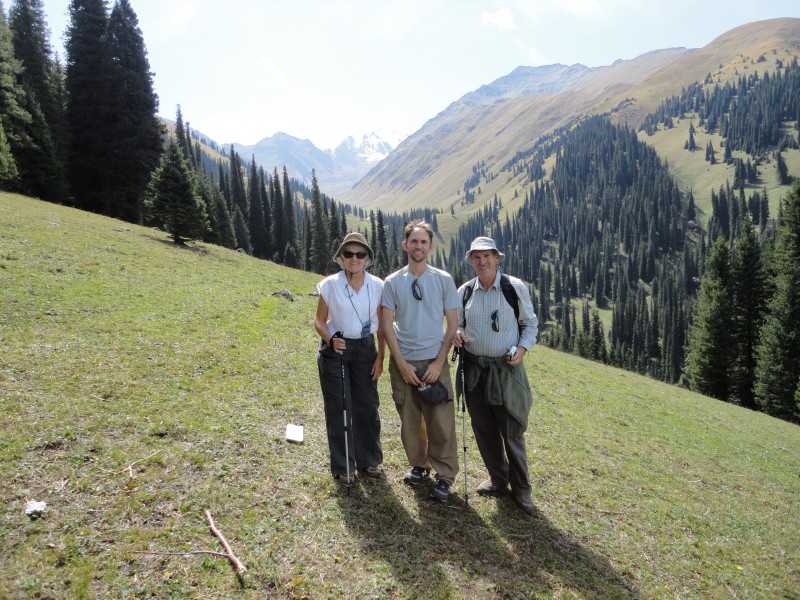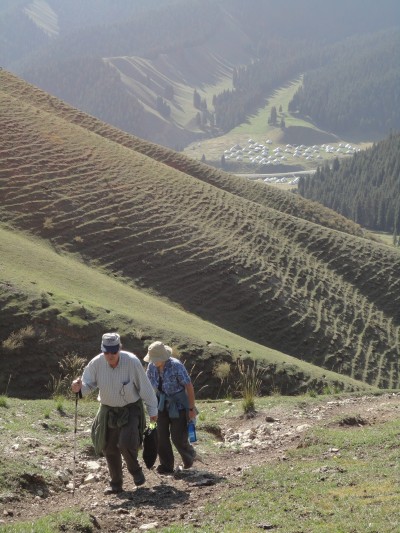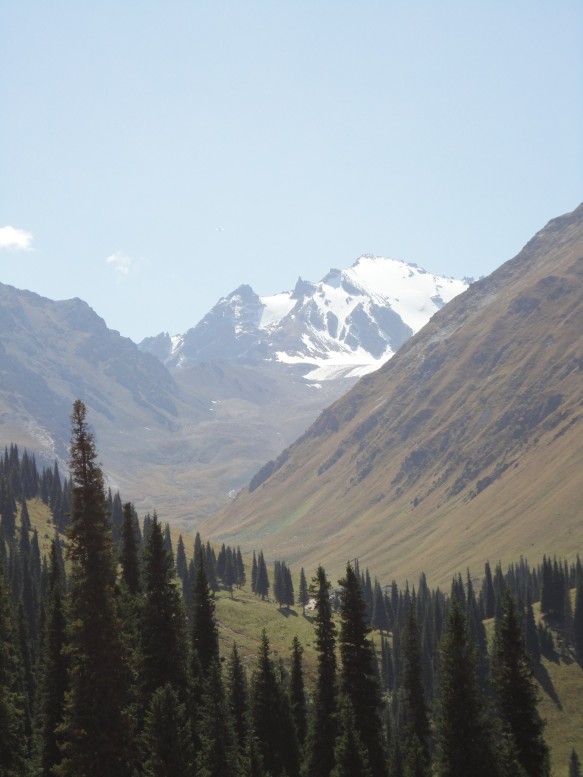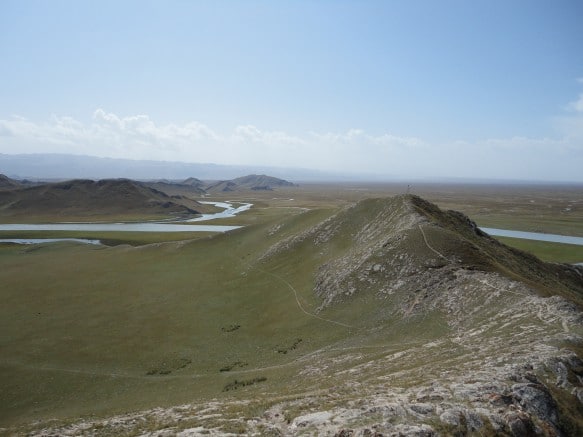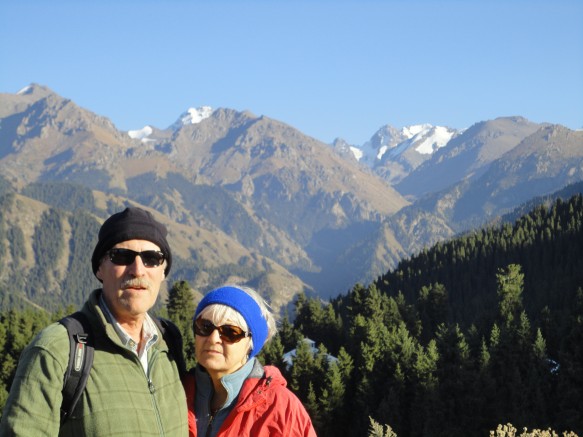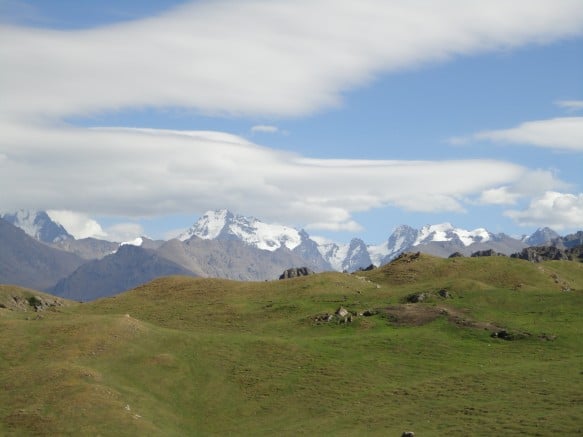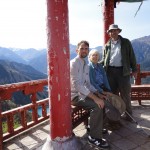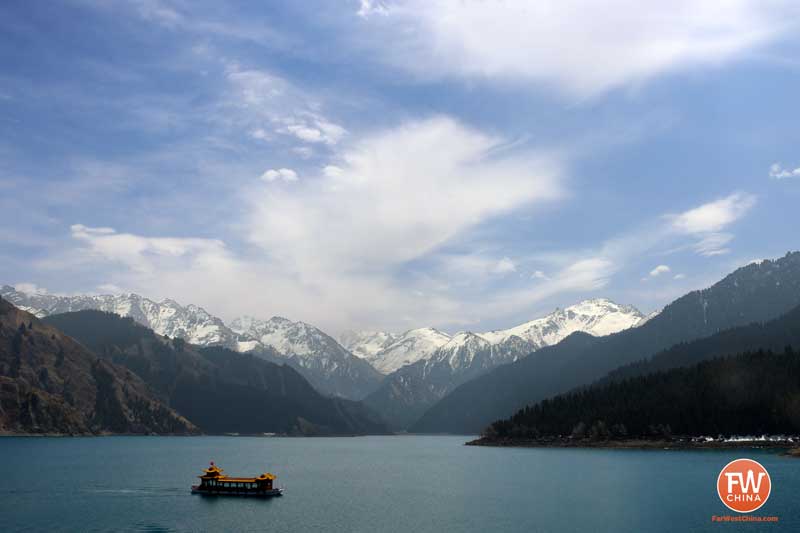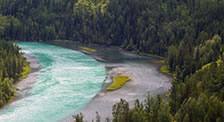A Hiker’s Guide to Xinjiang, China
In September 2011, my parents and I arrived in Xinjiang for a two-week stay. We had been discussing the trip for nearly four years and our primary goal was to spend time in the Tian Shan.
We accomplished this goal, but not in the way or to the extent we had hoped for.
I am writing this article to explain our experiences to other would-be trekkers, and reflect on what we could have done differently, or what other people in different circumstances could do, to better experience the Tian Shan.
Introduction to Hiking
My family is fond of hiking. Although we are not fiercely avid trekkers, my parents, who are in their 60s, take multi-day backpacking trips in Montana’s Glacier National Park every year, in addition to many other day and overnight hikes each summer.
I have done a good amount of hiking in the Rocky Mountains and other parts of the world, with my most exotic experience being a five-day trek in the foothills of the Himalayas in Nepal. On that trek, my friends and I walked up a river valley, buying meals and lodging at tiny settlements along the way. We carried clothing and some supplies, but no food or bedding.
What we were looking for in the Tian Shan was something of a mix between what my parents do every year in Glacier Park and my experience in Nepal: a multi-day trek with plenty of stunning views of snow-capped mountains but without having to carry and prepare all of our own provisions.
However, despite our clear goal, we landed in Urumqi with almost zero plans in place. This was not for lack of trying, we had all spent many hours on the Internet looking for information about trekking in the Tian Shan. We had sent inquiries to several companies, organizations and websites but had gathered very little that was useful in a concrete way.
This lack of a plan was partially by choice. We did find companies who offered exactly the kind of multi-day trips we wanted. The kicker: enormous price tags. So, if you are willing to pay several hundred dollars per day per person for a trek in the Tian Shan, stop reading and start searching for tour companies.
China guidebooks said almost nothing about hiking in the Tian Shan, and there were no useful resources or maps online. But armed with a flexible attitude, we began our trip knowing there were big mountains out there and somehow were were going to find a way to see them.
Hiking the Nan Shan
The only concrete piece of advice we had was that the Nan Shan areas near Urumqi should provide some good hiking opportunities. We spent a day organizing in Urumqi and the next morning boarded a bus for Nan Shan.
We arrived, found a place to stay in a yurt and took a pleasant walk up the canyon to a waterfall.
The next day, we hiked around the surrounding hills. The grasslands spotted with sheep and herders’ huts were lovely and there were some pretty mountains, but no snow-covered giants.
There were no other obvious recreational options, so we decided not to spend another night. We poured over our maps and decided on a plan that would take us on a big loop out West and back to Urumqi, probably lasting about a week.
I should note that I speak basic-intermediate Chinese due to a year living in Beijing, and my Japanese abilities make it easy for me to recognize and learn new characters. Making the trip we did with zero Chinese skills would be significantly more difficult. We met few people on our travels who spoke English, and once we left Urumqi, saw almost zero other foreign friends.
Nalati Grasslands (Narat)
We returned to Urumqi and with great difficulty and some tweaks in the plan we had made, got on an overnight train to Yining. We spent the night in town and left on a bus the next day to Nalati, a small town that serves as a launching point for the Nalati Grasslands Natural Park.
The next morning, after paying the surprisingly pricey entrance/bus fee (something we encountered in all nature parks in Xinjiang), we headed into the grasslands.
They were, as advertised, impressive—a vast verdant expanse edged by those big white mountains we had been searching for. We took a long walk up into the foothills that afforded even better views of the snow-capped giants.
While there was plenty of amazing country, the park lacked the infrastructure to support the kind of multi-day treks we wanted to do. This represents the biggest obstacle we encountered on our trip: a lack of support for people wanting to get even slightly off the beaten path.
In every place we visited, we encountered good facilities for the sizable crowds wanting to see the main sights. Some of these facilities were impressive in the way only China can be—like one hike of several miles where the trail was completely made of giant hand-laid stone blocks.
But walk just ten minutes away from these headliner attractions and there was nothing.
If we had been fully supported with food and gear, we could have just walked toward the horizon, but we could find nothing in terms of trails, maps or guides. If we had been more adventurous, we might have had success with just setting out with our day packs and offering to pay for bread and board at the yurts we passed in the hills.
Bayanbulak Grasslands
The next morning, we boarded a mini-bus for the trip of several hours up into the highlands to the town of Bayanbulak. A true frontier town and the most remote settlement we were to visit on our trip, Bayanbulak sits on a high plain surrounded by higher mountains.
I am not sure of the elevation, but the area is above tree-line, so there were only endless hills of brown grass. Nearby is the Bayanbulak Swan Nature Reserve, which is the main, and only, attraction.
We spent a day touring the reserve, which is mostly known for a view of a zig-zagging river that shines like a jewel when the sun sets over it. Again, the place was beautiful, but options were limited to the stops on the tour bus.
We had planned to complete the route by taking a bus south to Kuche and then an overnight train back to Urumqi. However, we learned in Bayanbulak that there was no bus to Kuche. We could have hired a car, but locals urged us that the roads were bad and the only willing driver would not budge on the steep price he was asking.
If someone will not bargain even a little in China, it probably means they are not very interested in selling. So, we boarded a bus that backtracked a little and then turned east to Korla, where we boarded a night bus that had us in Urumqi in the morning.
Hiking Heavenly Lake in Xinjiang
Surprisingly, our best hiking of the trip was in the Heavenly Lake (Tian Chi) area just outside of Urumqi.
One of the biggest tourist spots in Xinjiang, we had been avoiding it, as we had heard how large and unpleasant the crowds were.
The hordes were indeed big, even at the end of the tourist season we were traveling in, but like the other places we visited, a few steps off the paved paths was all it took to find peace and quiet.
Heavenly Lake was nice because of the great views of the nearly 18,000-foot Bogda Peak. We took several nice hikes that gave different vistas of snowy peaks and the sky-blue lake.
After two nights at Heavenly Lake, we found a ride back to Urumqi and the next day boarded a plane to Nanjing, to start the vastly different second half of our trip in eastern China.
Final Thoughts on Hiking in Xinjiang
All in all, our experience in Xinjiang was very enjoyable. We were able to visit several beautiful places, each of which showed a slightly different side of the Tian Shan range. Considering the time we had available, our Chinese skills, and the tourism environment and infrastructure, I think our trip was quite successful.
If I were to return to Xinjiang, and if my goal was to do more hiking in the Tian Shan, I would probably bring full backpacking gear, stock up on food, head to Heavenly Lake, and start hiking upstream.
From what I saw and heard, I think this would soon have me walking at the base of the white giants that were distantly visible from the lake. Doing the same in the Nalati Grasslands would also probably have been enjoyable.
As I have said repeatedly, I believe the main barriers to trekking in the Tian Shan are the difficulty of access and paucity of information. Currently, there seems to be little motivation for the locals to develop such infrastructure.
In every place we visited, there were plenty of tourists, nearly all of them Han Chinese from the eastern provinces. These are the customers whose desires determine what is for sale in terms of nature experiences in the Tian Shan.
At present, they seem content to buy their brand-name (or knockoff) hiking outfits in Beijing or Shanghai, board crowded buses, and be shuttled around to predetermined spots, only alighting for brief photo opportunities. Eventually, some of this crowd will tire of the beaten path and start looking for ways to have a more intimate natural experience.
About the Author:
JoAnn Hanson, Eric Stimson and Carl Stimson traveled to Xinjiang in September 2011. Carl lived and worked in Beijing for a year in 2007-2008 and traveled for several months around China in 2002. Carl currently lives in Japan. Eric and JoAnn had never been to China before. They live in Montana, USA, and are retired from careers in geology and computer programming, respectively.

